
Research Design Statement of Problem Research Design
Method
a. Materials: Students textbooks for current semester’s class, KWL forms (What I Know, What I Want to know, and What I Learned), Think-Aloud Self Evaluation forms, Denver Reading Attitude Survey, graphic organizers, pencils KWL individual response sheets, and paper for reflective writing for KWL, Think Alouds Self-Evaluation, and Summary writing using graphic organizers (Davey, 1993; McAllister, 1994; Ogle, 1986; Rhodes, 1993).
b. Population: The participants were second semester freshman students on academic probation at Bridgewater State College who were not in any other treatment group. Bridgewater State College has developed Fortified Freshman Seminar, Targeted General Education Requirements (TGERs) and a linked Writing and Sociology courses to provide additional support to classroom instruction for students who were placed on academic probation. These seven students were not placed in any one of the special programs. Out of these seven students, three were randomly selected for the purpose of this research.
c. Project Design: A multi-base design was used in this project. The independent variable was introduced when there was a stable trend on the dependent variable, and then another independent variable is introduced. Again when there was a stable trend the third and final independent variable is introduced. With multiple-baseline design, “skill or strategy being taught (the dependent variable) is not reversible. The multi-baseline design did not require a return of the academic response to baseline levels to demonstrate functional and cause–and-effect relationships” (Neuman & McCormick, 1995, p. 48).
d. Outcomes: Students:
-
Activated prior knowledge
-
Read course materials with comprehension
-
Monitored comprehension
-
Wrote summaries of assignments using graphic organizers
-
Improved attitudes about reading and writing.
e. Time Line: Before the intervention, student wrote reflections of their attitudes and history of reading and writing. They also completed the Denver Reading Attitude Survey. Students met Mondays, Wednesday, and Fridays 11:00 am - 11:50 am for a full semester. Students did not earn college credit for participation in this reading class.
Weeks 1- 3 KWL was introduced at the beginning of the first week of the study. Then, students used KWL forms as they read their textbooks. At the beginning of each week, students wrote journal entries about the use of KWL.
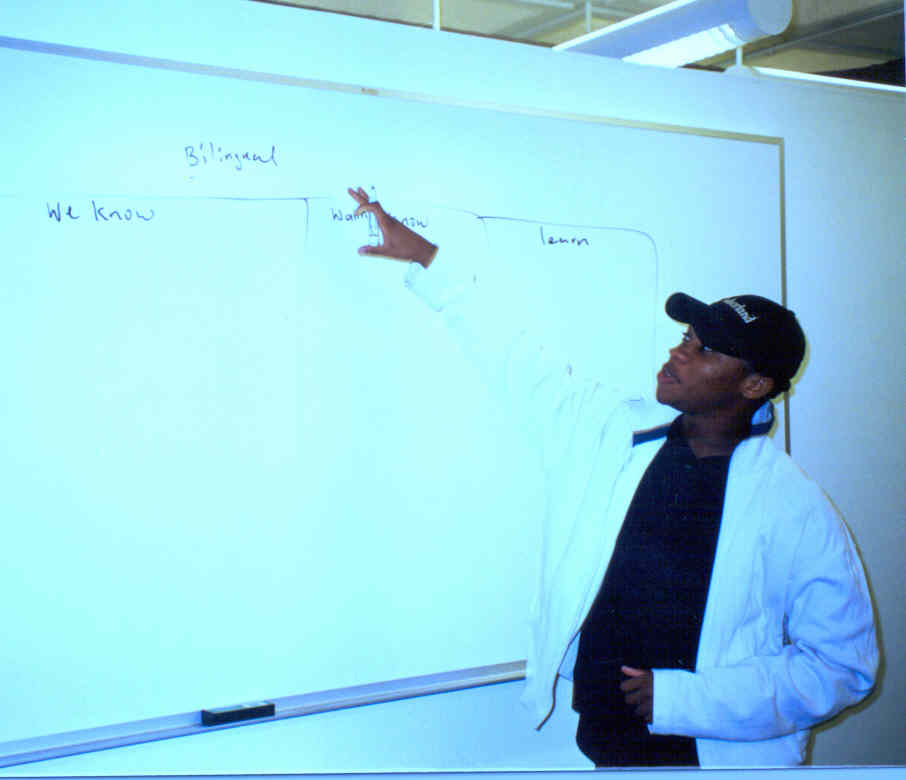
Weeks 4-6 Think aloud Self-Evaluation was introduced at the beginning of the fourth week of the study, and students used Think aloud Self-Evaluation form as they read and used the KWL forms. Students at the beginning of each week wrote in their journals about KWL and think aloud strategy.
Weeks 7-9 Summary writing using graphic organizers was introduced at the beginning of the seventh week. Students continued at the beginning of each week wrote in their journals about KWL, Think Aloud Self-Evaluation, and summary writing. Students with the instructor created a rubric to evaluate summaries.
Findings
For the baseline data students were asked to write a reflection of the attitudes about literacy, complete the Denver Reading Attitude Survey, and after reading a section in their text books, wrote a reflections of the strategies they used while reading the chapter. Students' attendance and participation was excellent.
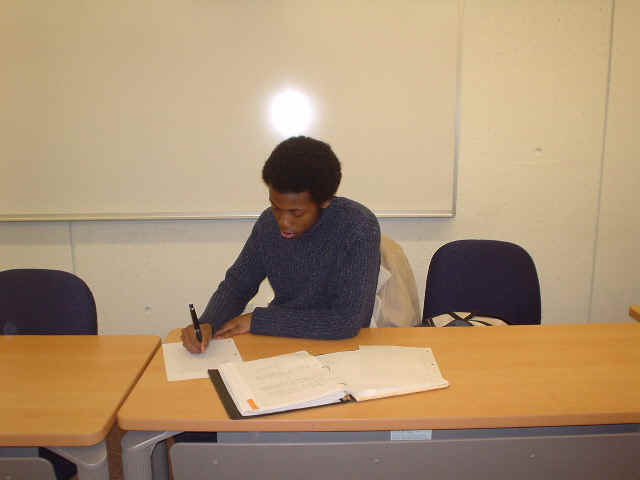
Student A wrote in his reflection about literacy that reading was boring and time consuming, and he only read when it was “imperative.” His responses on the Denver Reading Attitude Survey supported this since he stated that he did not read newspaper or told a friend about a book and did not read on own out side of school. Although he stated that he did not read for pleasure, both his written responses about strategies he used while reading and the responses on the Denver Reading Attitude Survey supported that when he read he felt he accomplishes something, he learned from reading, and reading would help him understand the world and helped him to get ahead in life. He also stated that reading in college extended and improved his vocabulary. According to his reflection after reading the chapter in textbook, he underlined key points and took notes. This student also saw himself as an average reader.
Student B wrote in his reflection that he saw a reading teacher first through ninth grades. He stated that he read magazines and subjects of interest. When discussing his strategies while reading a textbook chapter, he stated that he got comfortable and looked over the passage before reading. The Denver Reading Attitude Survey responses supported his attitude toward reading. He rarely read newspapers or told a friend about a good book, did read on his own if he was curious about the subject, and believed that reading would help him get ahead after he was no longer in school. About half of the time while reading, he felt reading helped him to learn and understand the world around him. He did not answer questions about the kind of reader he thought he was, what do others think about his reading, and learn important facts when reading. This student did not answer the question, "What kind of reader are you?"
Student C's reflection stated that she did not like to read and felt she lacked confidence and skill. This attitude was supported in her responses on the Denver Reading Attitude Survey. She never or hardly ever was interested in reading, did not read own her own, felt reading did not teach her about self, others, and the world. The reading strategies that the Student C used while reading was that she read the last page, so she “would have a clue what’s going on then read it slowly." She also highlighted things she thought were important and underlined words she did not know to look them up. This student thought of herself as an average reader.
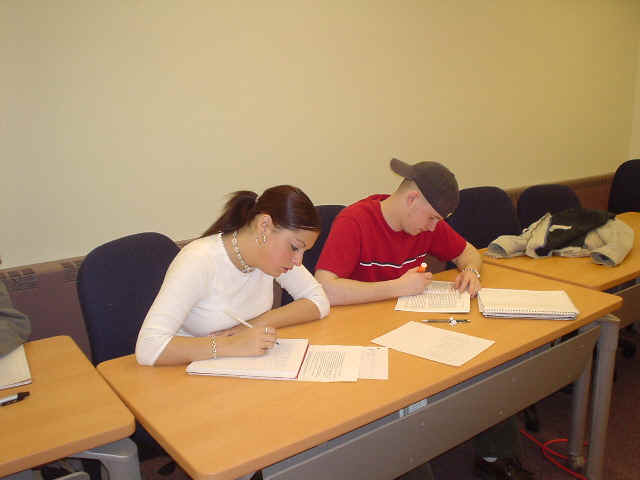
Intervention
During the first week of the intervention, Students A, B and C were introduced to the KWL strategy. Quality of responses ranged from Good to Poor: for giving two or more responses the student received a Good, for giving one response the student received Average, and for no responses the student received a Poor. Students used this strategy while reading their textbooks for the course they have chosen to link with this reading group. This intervention was used for the first three weeks of treatment. Throughout the intervention, students wrote a reflection of the intervention in their journals and discussed what they learned from reading at each class session.
Think Aloud Self-Evaluation was introduced in the fourth week while students continued to use the KWL strategy. These two interventions continued when summary writing was introduced in the seventh week. While reading, students were asked to check off how much time they used in making predictions, forming pictures, linking prior knowledge, asking questions, and using fix-up strategies. The four ranges were: not very much, a little bit, much of the time, and all of the time.
On the seventh week, students introduced to graphic organizers for writing chapter summaries. Together with the instructor they created a summary rubric. Additionally, during weeks 7 through 9, students continued to use KWL and Think Aloud Self-Evaluations.
All, but one of Student A’s responses fell in the good range on his KWL chart. His journal entries showed that he found KWL charts helpful because they helped put information in order. He used the charts in class, and highlighted or starred the points that the professor covered in class. He liked that the KWL charts because he had to write down important points in the chapter. Student A also used the information gathered on KWL charts to create a study guide to study for his midterm.
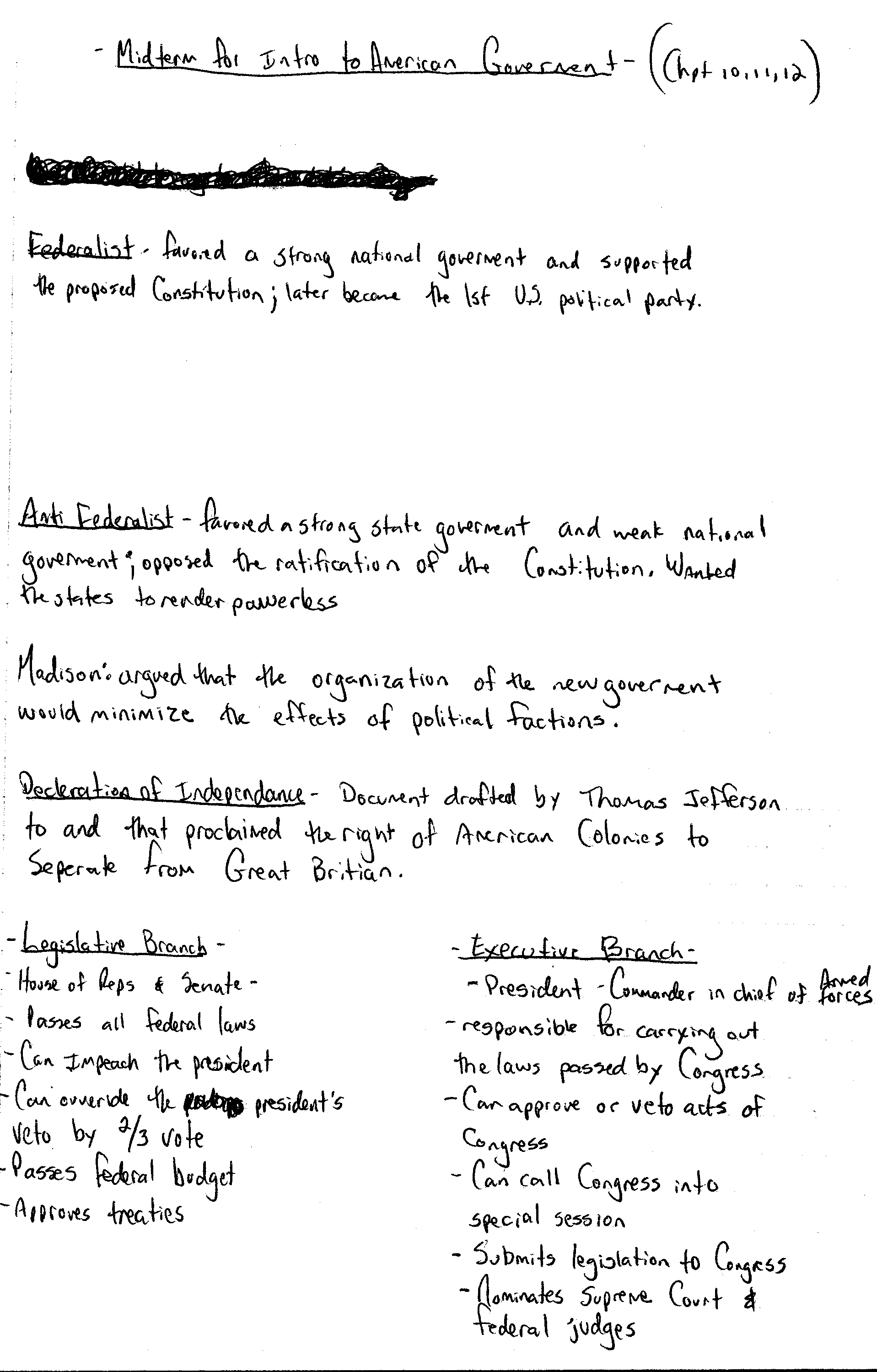
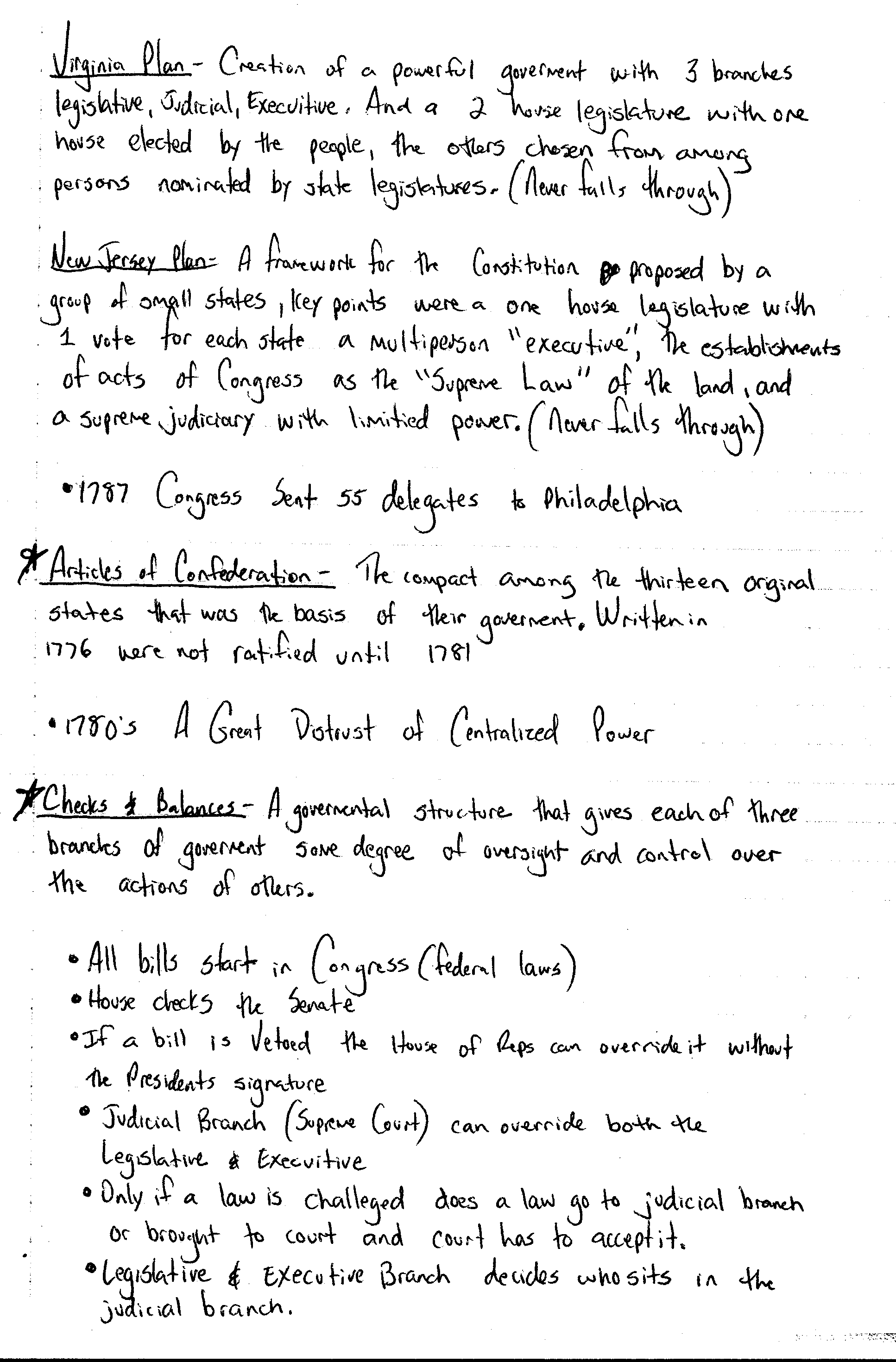
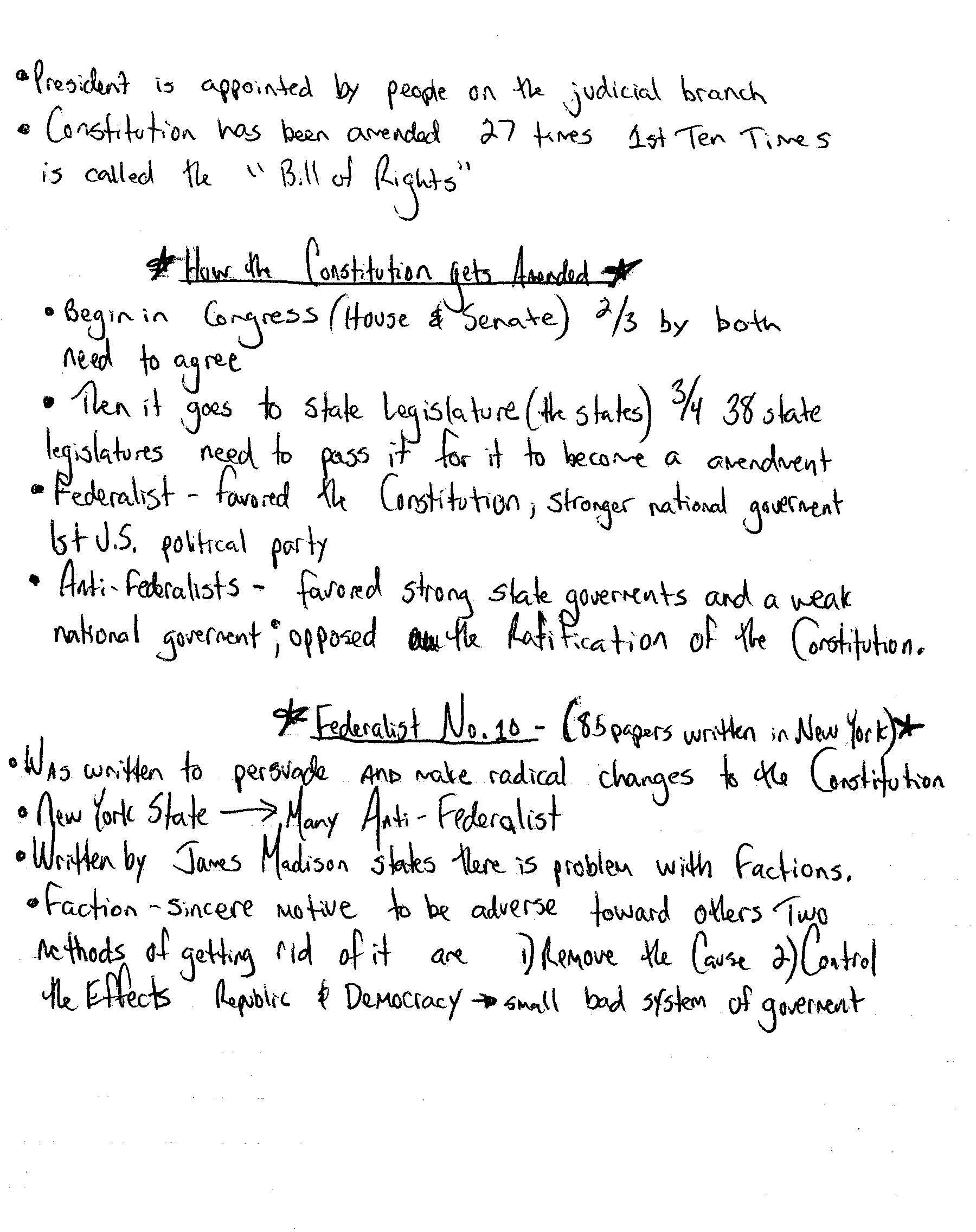
Student B had mixed responses using KWL chart. During the first week of intervention, Student B had all good responses on KWL, and he used good vocabulary in his questioning. During the second week of the intervention, Student B continued to ask questions, but did not demonstrate any content knowledge. Week three and four was the same as week two. During week five, Student B did not use KWL at all. He wrote notes from his reading. Using a new book, Student B had good responses in what he knew about the subject, good response in what he wanted to know, and poor response in what he wanted to learn. His journal entries reflected that he used KWL when he wrote his essay for his class.
Student C received Good for most of her responses. On three responses, she scored average or poor on “What do you know about the subjects?” and “What do you want to know?” but had good quality responses in what she learned. She even made opinion statements and evaluated her reading on her KWL chart. Student C’s journal entries were very positive when using KWL.
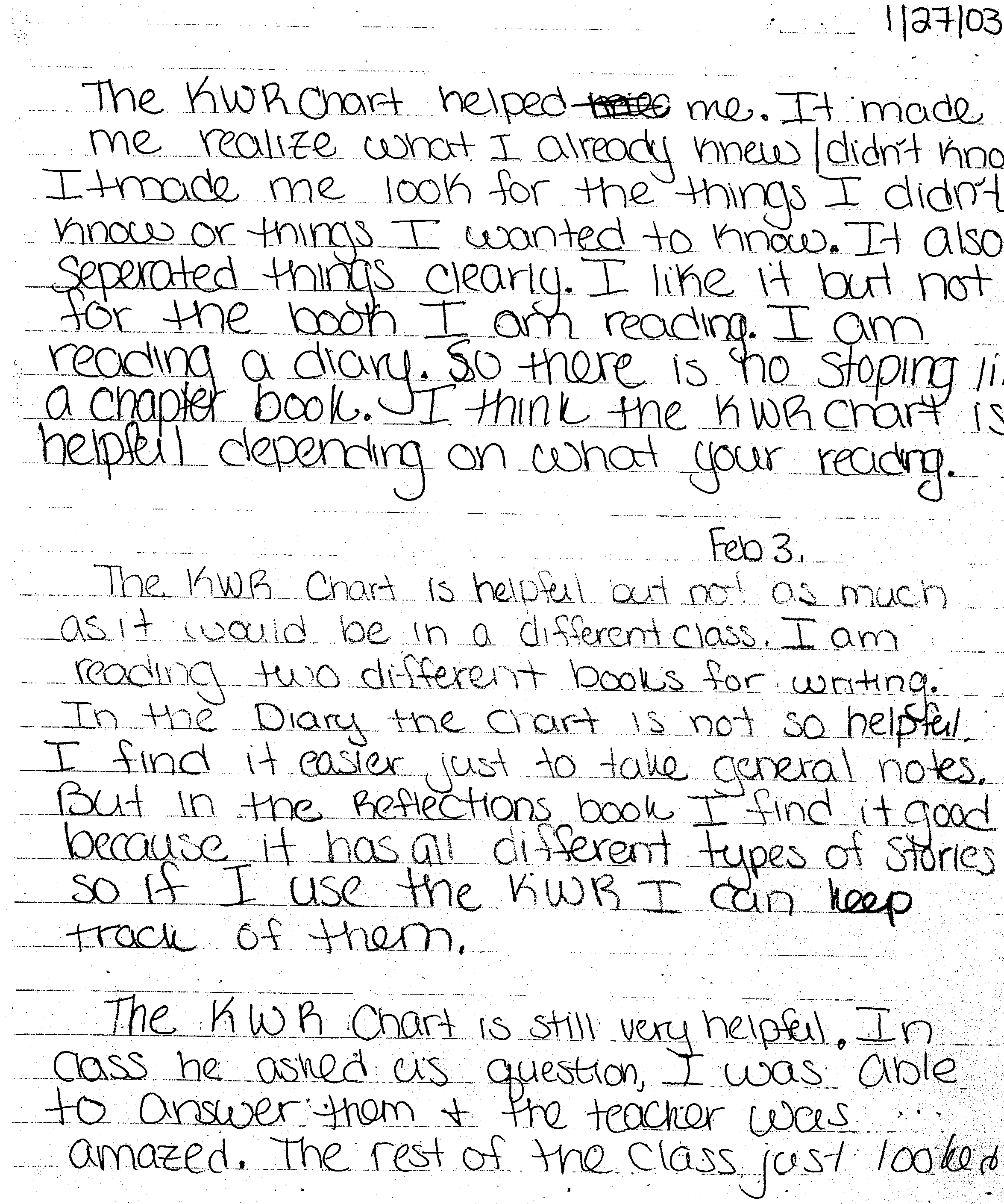
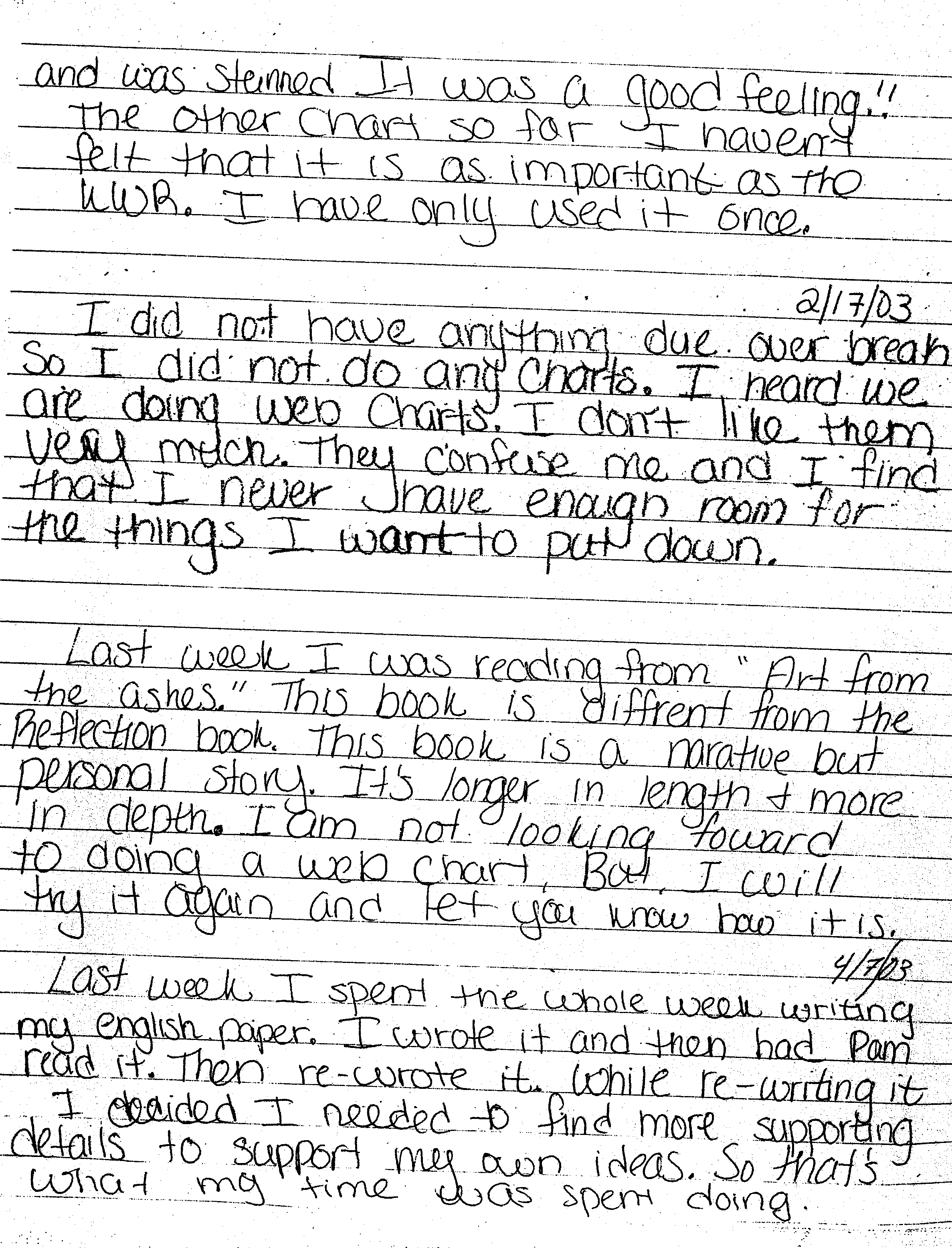
During week four, students were introduced Think Aloud Self-Evaluation while they continued to use the KWL. Student A continued to use and think positively about KWL strategy. He did not mentioned Think Aloud Self-Evaluation at all in his journal entries although he used them when reading three assignments. His Think Aloud Self-Evaluation charts showed that he used a variety of think aloud strategies as he read. His Think Aloud Self-Evaluation charts showed that he did not make predictions when he reads. He did form pictures, linked to prior knowledge and asked questions, some of the time, and used no fix-up strategies.
Student C only used the Think Aloud Self-Evaluation for one week of the intervention. Her comments were wide-ranging. She did not make any predictions or use any fix-up strategies. She felt she linked her prior knowledge to what she read, asked questions much of the time, informed pictures all of the time. Student C’s journal entries did not mention Think Aloud Self-Evaluation.
During week seven, Summary writing and graphic organizers were introduced. Students with the instructor created a rubric to evaluate the summaries. Student A was the only one who embraced this strategy. Students B and C did not use the strategies although during that time they continued faithfully to use KWL and sporadically used Think Aloud Self-Evaluation. Student B said in his journal that he thought that reading was so detailed, it was hard to summarize and felt that summary “maybe best for one of my other courses.” Student C in her journal entries stated that she felt the Think Aloud Self-Evaluations was not as important as KWL and found graphic organizers and summary writing difficult; however, she valued the KWL charts greatly.

Analysis
Students’ reading comprehension improved when reading course materials. These improvements were evident in their responses on KWL charts and class discussions. One important point to mention was that this group was randomly placed, and by chance, these students had a few classes together which created excellent discussions. While using the KWL charts students connected to prior knowledge, had purpose for reading, and kept focused and organized their understanding of the reading. Moreover, students’ comprehension was also apparent in that they developed study guides and created essays from the information on their KWL charts. This strategy provided these students with a tangible approach to reading and used writing as a means of understanding reading.
Monitoring comprehension was not as evident as reading comprehension of the material. Students sporadically used Think Aloud Self-Evaluation; therefore, they began to think about their learning, but they needed more commitment to using this strategy.
Summary writing using Graphic Organizers was not widely used by all students because they failed to see the relevance of it. Most students had difficulty with graphic organizers; therefore, they did not write summaries. Students were confident using the KWL, and teaching a new strategy towards the pressure point in the semester was not effective.
Active participation in this reading group improved attitudes about reading and writing. Through discussions and observations students expressed more confidence in their reading and writing abilities. In fact, all the students hoped that the group would continued in the Fall 2003 semester.Conclusions
KWL, Think Aloud Self-Evaluation, and Summary writing with graphic organizers were appropriate strategies for college students. However, the time limit in this research design made the second and third intervention less effective than the first. Three interventions with this population of students in nine weeks were overwhelming as the semester advanced. KWL was used all through the intervention. Students became comfortable and used this strategy effectively. However, the Think Aloud Self-Evaluation was introduced mid-way; therefore, not enough time to effectively practice to become proficient. Summary writing and graphic organizers for most students was introduced during the part of the semester when the students were under peak academic pressure, such as mid terms, term papers due, etc.
Implications
KWL, Think Aloud Self-Evaluation, and Summary writing with graphic organizers are appropriate strategies for college students especially students on academic probation, struggling readers in college, and first time college students. As a result of this intervention, there are several recommendations for instruction. First, graphic organizers of a textbook chapter need to be taught before KWL. Students understand and see through graphic organizers the chapter as a whole. Then, KWL should be taught, so students can get the details in each section of the chapter. When teaching KWL, summary statements need to be taught to connect the details back to the whole chapter. Finally, metacognitive strategies need to be taught for students to become effective readers, and these strategies need to be taught in conjunction with KWL, summary writing, and graphic organizers.
The findings of this study are limited to this population at this time, and therefore are not to generalized.
References
Davey, B. (1993). Think aloud-modeling the cognitive processes
of reading comprehension. Journal of Reading, 27 (1),
44-47.
Davis, W. A. & Rhodes, L. K (1993). Denver Reading Attitude
Survey. In Rhodes, L. K. (Eds.), Literacy assessment: A
handbook of (pp. 16-20)
Kucera, J. & Axelrod, S. (1995). Multiple-baseline design. In
Neuman, S. B & McCormick, S. (Eds.), Single-subject
experimental research: An application for literacy
(pp. 47-63).
McAllister, P. (1994). Using K-W-L for informal assessment. The
Reading Teacher, 47 (6), 510-511.
Ogle, D. (1986). K-W-L: A teaching model that develops active
reading of expository text. The Reading Teacher 39,
564-570.